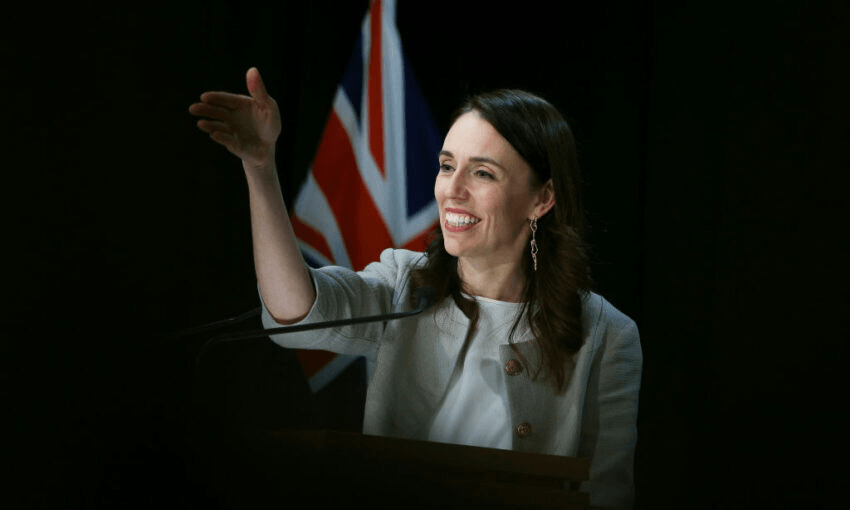Jacinda Ardern and her cabinet yesterday chose the middle and least bad option. The next week will be critical in assessing whether the right choice was made, writes Justin Giovannetti from parliament.
The sense of relief in the basement of the Beehive was unspoken but plain yesterday as Jacinda Ardern and Ashley Bloomfield took their podiums at prime time.
Covid-19 is a tricky adversary, but New Zealand’s luck might still be holding.
As cabinet gathered yesterday afternoon, New Zealand’s second wave of coronavirus seemed to be following one of the least terrible scenarios imagined in the government’s hastily-thrown together Covid-19 manual. Infections are being detected through early testing, aggressive contact tracing is finding cases and isolation is proceeding quickly.
There’s been a focus on what has gone wrong over the past week. The lack of testing of most border staff over the past months is one of the most damning failures revealed in recent days. However, much has gone right.
The system, for the most part, seems to be working. Most of that system didn’t exist in March when cabinet first faced this dilemma.
The government’s 18 ministers around the cabinet table and joining by Zoom yesterday faced three possible options: Reduce Auckland’s alert level and roll the dice, steady as she goes or lock it down further. The middle option was the least bad and only choice discussed.
In a world overrun with Covid-19, locking down your largest city and a third of your population for two weeks now counts as a win.
The government is now rolling out its “resurgence response plan”, the official term for the return of community transmission. According to Ardern, the plan has “the primary purpose of restoring our level one freedoms as quickly as possible”.
What that means for now is completing a fortnight of partial lockdown under alert level three in Auckland. Level three is the set of rules described as the “waiting room” by the prime minister as the first wave of coronavirus ebbed. The rest of the country is in level two. While the restrictions under level two are less onerous, the Covid-free honeymoon is over throughout New Zealand.
The next week will be critical in determining whether the right choice was made.
According to the director general of health, officials will be looking closely at the next seven days to see the “pattern and spread” of the virus. They will be looking at where it is and how quickly the numbers grow. They’ll also be keeping an eye on cases coming out of school and churches. “We’re growing quite quickly at the moment, we’d like to see that taper off,” said Bloomfield.
In the three days since Tuesday night the health ministry has identified 29 cases. All are linked to a single Auckland cluster, focused on the city’s southern suburbs. As of last night one case was still being investigated, but is considered to be linked to the cluster.
The government has moved 38 people into quarantine by order of the director general of health. That number includes some family members who are currently asymptomatic. The vast majority of Covid-19 transmission is in the home, so quarantine is a way to break those links and save some New Zealanders from facing the virus. That also means that infected people and their families don’t need to worry about food or housing for the next fews days, largely eliminating accidental transmission.
Contact tracers have identified more than 771 close contacts and reached 83% of them within two days. That’s the “gold standard” according to health advice.
And in the 48 hours, more than 30,000 tests were processed. That far exceeds the country’s capability when Covid-19 first appeared.
With that information, cabinet voted to keep level three in Auckland for 12 more days. That decision imposes a level of restriction higher than called for by the government’s guidelines. According to the health ministry, level three should be used when the risk assessment points to significant community transmission and multiple clusters. That isn’t happening anywhere in New Zealand.
Contrary to many concerns, a move to level four was essentially off the table, according to Ardern. “There is nothing to suggest we need to move to a level four lockdown,” she said.
As of last night it remained unclear where the cluster started. The first case, and a number that have followed, have been linked to a cold storage warehouse in Mt Wellington. The virus can live for longer on cold packaging, leading to concerns that Covid-19 may have returned via freight. However, Bloomfield warns that’s unlikely.
Even without a clear understanding of how the virus came back in, New Zealand can defeat it, said the prime minister.
Perhaps looking to avoid chipping away at the public’s buy-in for lockdowns, this stage of level three also has fewer restrictions than during the first wave. Construction is continuing, both on infrastructure and on houses. More businesses are staying open, having adapted to social distancing measures or delivery.
A return to level four, with the current system of testing, tracing and quarantine, would signal a massive failure of the government’s Covid-19 response to contain the virus.
Ardern was supposed to be on the campaign trail yesterday, circling the country, meeting locals and brewing cups of tea. Instead she found herself in a parliament building that only days ago was shutting down. Last week saw a flurry of farewell speeches by MPs, the shedding of tears and the pouring of much drink. Boxes were appearing in offices of MPs and staff who might never return. Now the parliamentary precinct is unexpectedly home to tired and harried public servants, looking to beat off Covid-19 one more time.

